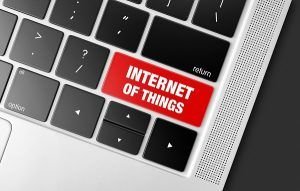Top 10 Semiconductor Industry Trends in 2023
The semiconductor industry is a constantly evolving and dynamic field, with new technologies and trends emerging at a rapid pace. In this article, we will explore the top 10 semiconductor market trends in 2023 and forecast these trends until 2028.
1. AI and Machine Learning
Artificial intelligence (AI) and machine learning (ML) are poised to be the most significant drivers of growth in the semiconductor industry in the coming years. As more companies and industries embrace AI and ML, the demand for high-performance computing and data processing capabilities will increase. This trend is likely to continue well into the future, as the applications of AI and ML continue to expand.
2. Internet of Things (IoT)
The Internet of Things (IoT) is another significant driver of growth in the semiconductor industry. IoT devices, including smart homes, wearables, and autonomous vehicles, require small, low-power, and high-performance processors to function effectively. As the number of connected devices continues to grow, the demand for these types of semiconductors will increase.
3. 5G Networks
The rollout of 5G networks is another trend that is likely to have a significant impact on the semiconductor industry in the coming years. 5G networks require specialized semiconductors that can handle high-speed data transfer, low latency, and increased bandwidth. As 5G networks become more widespread, the demand for these types of semiconductors will increase.
4. Advanced Packaging
Advanced packaging techniques, such as system-in-package (SiP) and fan-out wafer-level packaging (FOWLP), are becoming increasingly popular in the semiconductor market. These techniques allow for more functionality to be packed into smaller form factors, which is essential for mobile devices and other IoT applications.
5. Edge Computing
Edge computing is another trend that is gaining traction in the semiconductor industry. Edge computing involves processing data at the edge of the network, rather than in centralized data centers. This approach can improve performance and reduce latency, which is critical for applications such as autonomous vehicles and industrial IoT.
6. Quantum Computing
Quantum computing is still in its early stages, but it is likely to have a significant impact on the semiconductor market in the coming years. Quantum computers use quantum bits (qubits) to perform calculations, which could potentially lead to breakthroughs in fields such as drug discovery, cryptography, and materials science.
7. Cybersecurity
As more devices become connected to the internet, cybersecurity is becoming an increasingly important concern. Semiconductors that are specifically designed for security applications, such as encryption and authentication, will become increasingly important in the coming years.
8. Power Management
Power management is a critical consideration for IoT devices, which often have limited battery life. Semiconductors that can efficiently manage power consumption will become increasingly important in the coming years.
9. Autonomous Vehicles
The development of autonomous vehicles is another trend that is likely to have a significant impact on the semiconductor market. Autonomous vehicles require specialized semiconductors that can handle real-time data processing and decision-making.
10. Advanced Memory
As the demand for high-performance computing continues to grow, the need for advanced memory solutions is also increasing. Technologies such as HBM (High Bandwidth Memory) and MRAM (Magnetoresistive Random Access Memory) are becoming increasingly popular in the semiconductor market.
Forecast until 2028:
The trends mentioned above are likely to continue to shape the semiconductor market in the coming years. AI and ML, IoT, 5G networks, advanced packaging, and edge computing are likely to remain significant drivers of growth, as more devices become connected to the internet and demand for high-performance computing continues to grow.
Cybersecurity and power management will remain important considerations in the semiconductor industry, as the number of connected devices continues to grow. As more devices become connected to the internet, the need for robust security solutions and power-efficient processors will only increase.
The development of autonomous vehicles is likely to accelerate in the coming years, driving demand for specialized semiconductors that can handle real-time data processing and decision-making. As the technology improves, autonomous vehicles could become increasingly common on our roads.
Advanced memory solutions such as HBM and MRAM are likely to become more prevalent in the semiconductor market as the demand for high-performance computing continues to grow. These technologies offer higher bandwidth and faster access times than traditional memory solutions, making them ideal for demanding applications such as AI and ML.
In conclusion, the semiconductor market is poised for continued growth and innovation in the coming years. The trends mentioned above are likely to remain significant drivers of growth, as demand for high-performance computing and connectivity continues to grow. The industry will continue to evolve and adapt to new technologies and applications, creating exciting opportunities for innovation and growth in the years ahead.
Share this Post if you Find it Useful -
-
Facebook
-
Twitter
-
Linkedin
83422+ Reports Delivered
Accurate market data is crucial to a successful business strategy. With an 85% + accuracy in all reports, makes us one of the best and most accurate firms in the world.
Need Customized ReportCall NowRecent Post
-
Predictive Maintenance Market Growth: Key Trends Shaping the Future
-
Exploring the Growth of the Quantum Cryptography Market: Trends and Predictions
-
Blockchain Identity Management: Market Forecasts and Industry Growth
-
Generative AI Market Analysis: Key Players and Innovations
-
The Future of Work: How the AI Market is Transforming Industries










